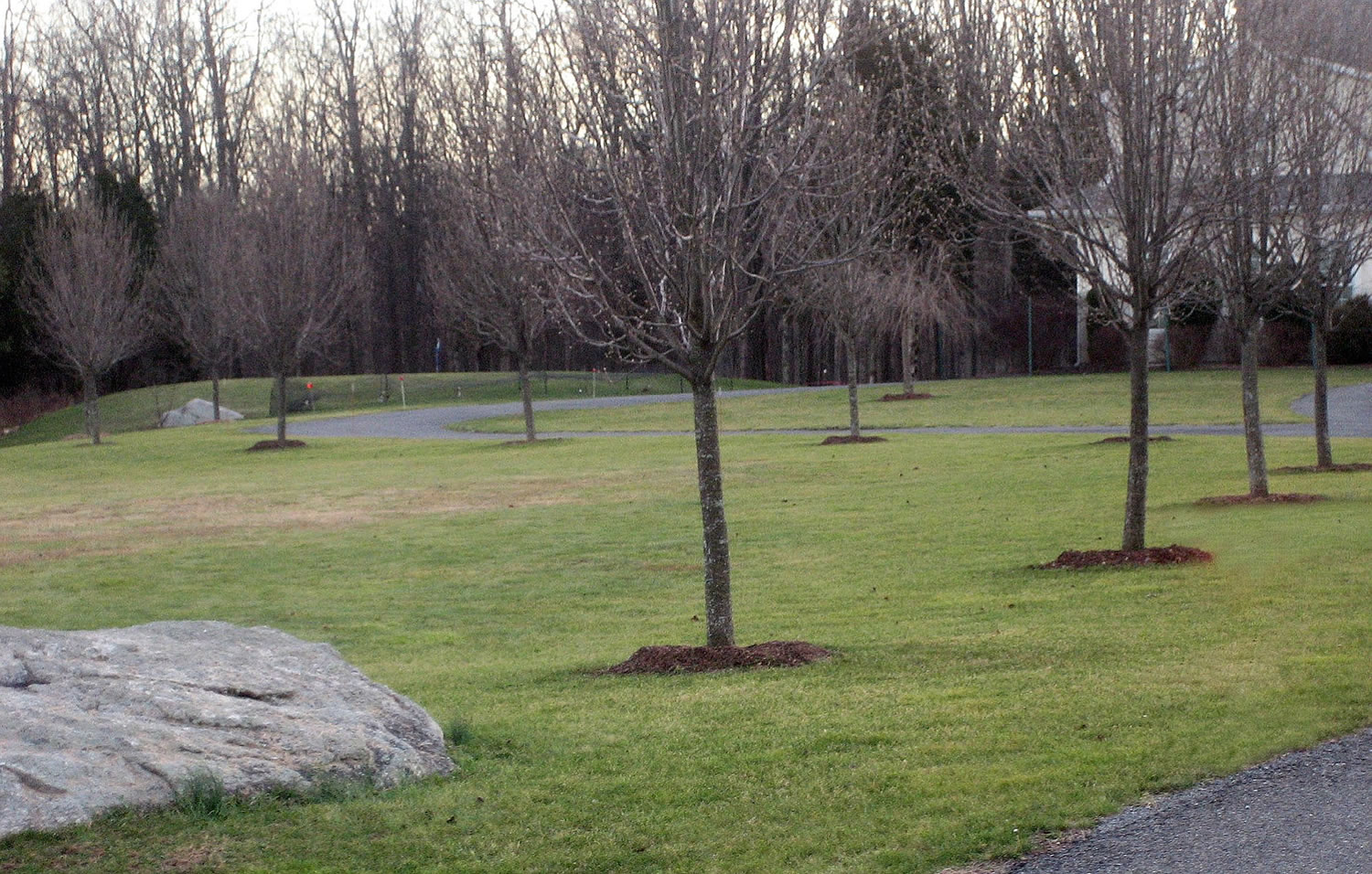Mulching can be one of the best things you do for your trees and shrubs. It also can be one of the worst things you do for your trees and shrubs.
“Mulch” is anything with which you blanket the ground, be it straw, black plastic, pebbles, even the marbles I once saw blanketing a portion of a contemporary California landscape. Any of these materials, when spread beneath a tree or shrub, will keep lawn and, hence, lawnmowers at bay. Mulches also help conserve water by slowing evaporation from the soil surface. But that’s about where the commonality among mulches ends.
Many mulches can enhance water use, for instance, by softening the impact of raindrops, so the soil surface stays loose, open and ready to absorb water. Rule out black plastic for this purpose, however. Another downside to black plastic is that it can leave roots gasping for oxygen.
• MORE BENEFITS OF MULCH — Mulches can contribute directly to a tree’s or shrub’s nutrition and health. As any organic material (wood chips, straw or leaves) decomposes, it releases nutrients and also helps make plant foodstuffs already in the soil more accessible to roots. Rule out pebbles, marbles or black plastic for this.
• POSSIBLE DARK SIDES — Potential Problem No. 1 is that mice simply love the cushiony, moist environment created by organic mulches. Furthermore, mice like to gnaw on the bark of living trees and shrubs, so a thick mulch piled up against woody plant stems provides these furry creatures with both food and lodging.
Since plants transport minerals and sugars through the bark, mouse feeding can kill a tree or shrub. An obvious solution is to keep organic mulches away from the bases of plants. A ring of bare soil a few inches in diameter around a tree or shrub is sufficient to cause Stuart Little to think twice about scurrying out, exposed to predators, for a bite. A cylinder of hardware cloth there provides further insurance.
Potential Problem No. 2 with using an organic mulch is that it can bring on rot if piled up against trunks and stems. Again, bypass this problem by keeping the mulch a few inches off.
• AESTHETICS — One last quality of mulches is their contribution to the appearance of a landscape. Again, rule out black plastic for this purpose.
True, plastic can be covered with something like wood chips, but coverings eventually slide off to expose the plastic.
Other mulches each have a place in helping to complete a picture: wood chips or leaves in a woodland setting, cocoa bean hulls in formal shrubbery, marbles in … where?




